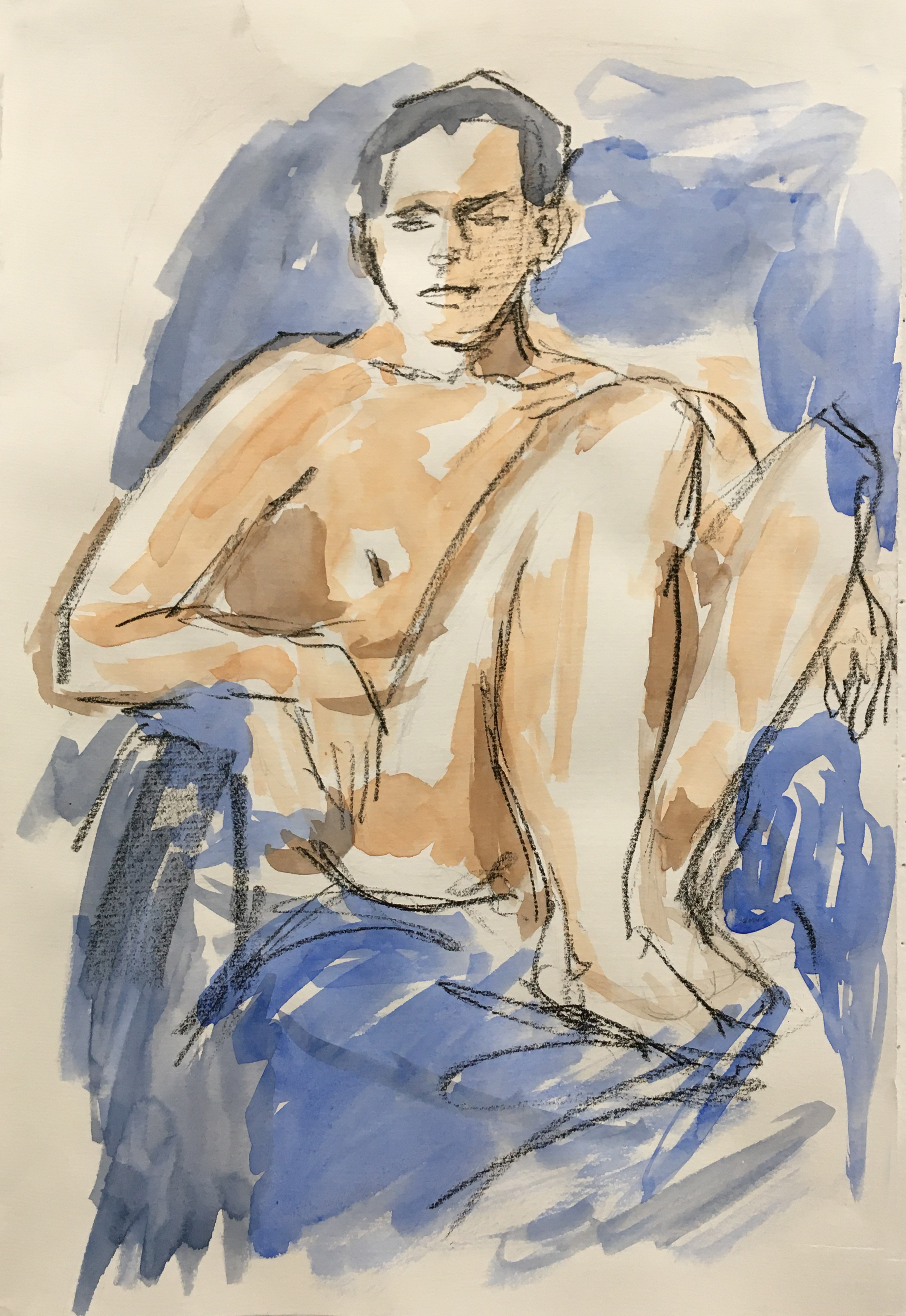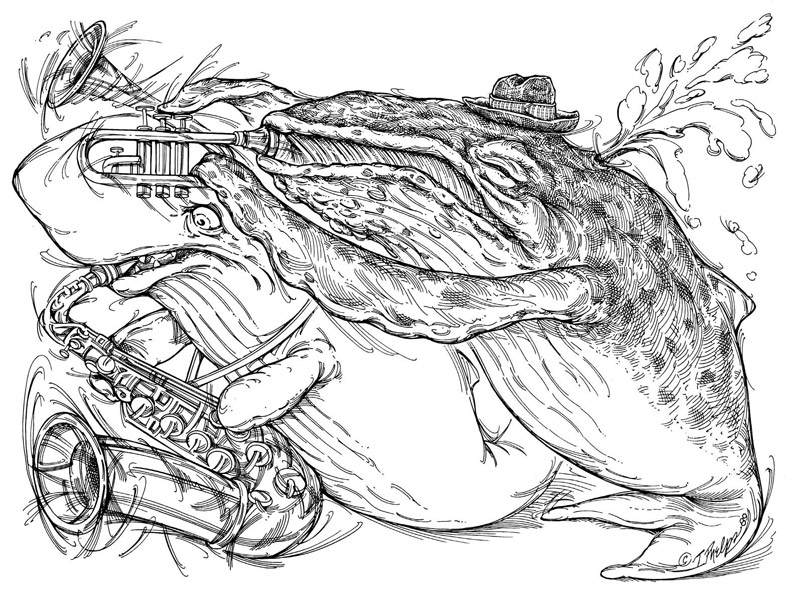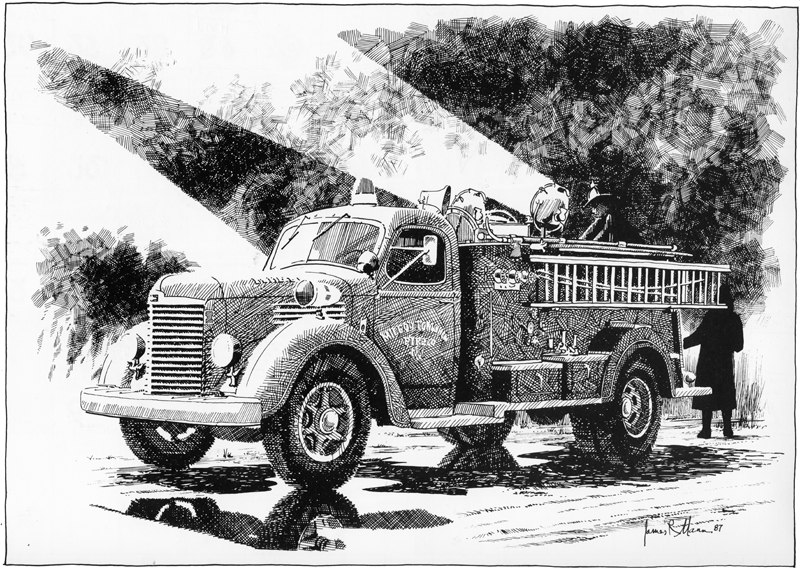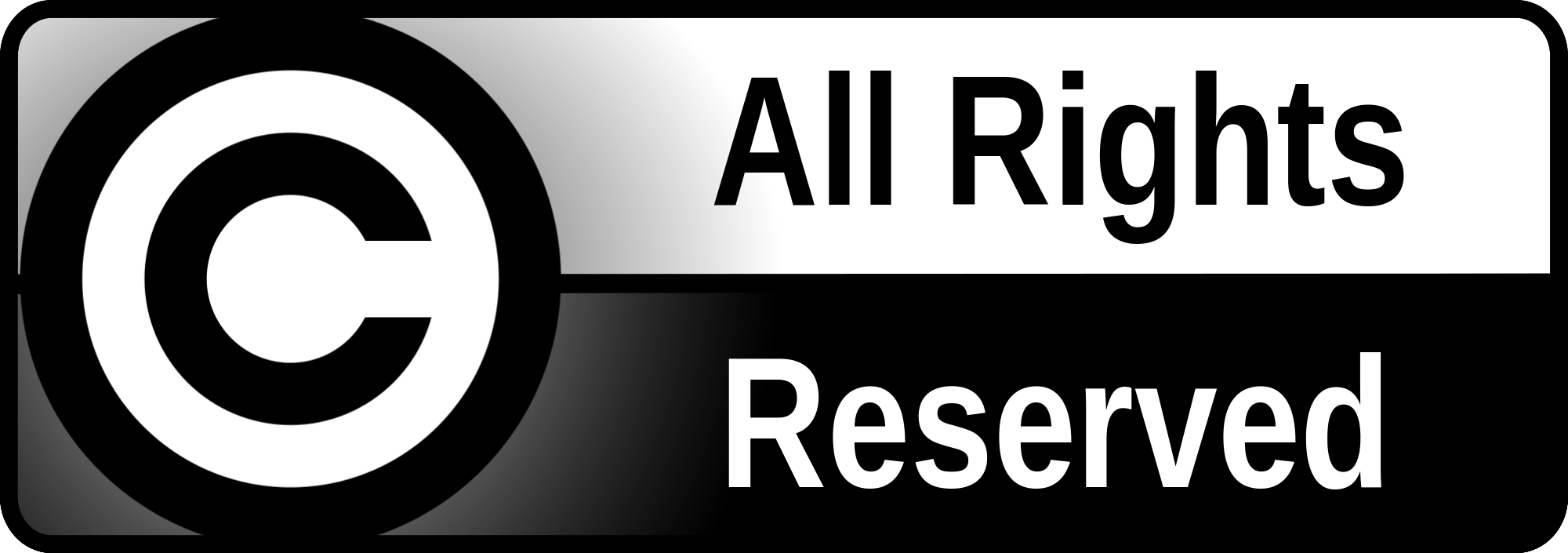1.13: Pen and Ink and Wash Drawing
( \newcommand{\kernel}{\mathrm{null}\,}\)
Pen & Ink and Wash
Drawing includes wet media, such as pen and ink and wash which often will refer to watering down ink and using a brush to apply a tone to the paper. The tone can be applied prior to or after drawing lines in ink, pencil, charcoal or other drawing medium. This expands the drawing repertoire and presents one more area for creative exploration. Do not concern yourself with whether you are creating a painting or a drawing since the lines are blurred when using wet media. The emphasis, when drawing in wash, is placed on the various aspects of drawing rather than the more expansive painting techniques using watercolors. It is more of an adjunct to drawing and a logical expansion of the pen and ink drawing techniques that go back centuries.
Pens
The most traditional quill holders are made of wood and have a metal holder at the end to hold the pen nib. Below are wooden holders made by the Joseph Gillott company of England. This are the pen & ink supplies I'm used to using and hold up quite well to professional production in applied art. They certainly will serve traditional fine artists well when creating ink drawings on Bristol paper, vellum tracing paper, and scratch board. Nibs come in a variety of sizes from the tiny crow quill nibs to the larger, stiffer nibs.




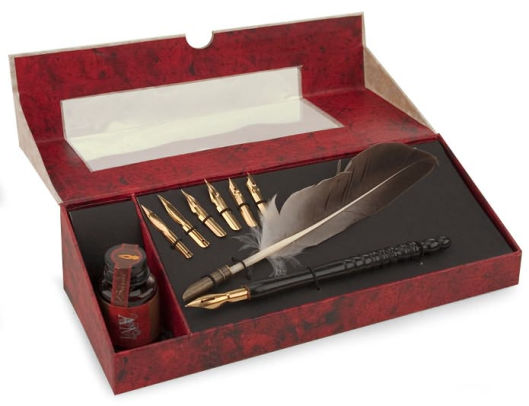

Ink


Papers

Containers
Pen & Ink Drawings

Traditional pen and ink drawing includes the use of a well of ink, a flexible nib pen, and a drawing surface that will accept the ink without the ink bleeding. This is a difficult technique and not easily mastered by beginning students. An easier method is to use Micron pens on Bristol paper. Erasing ink is a different matter and best left to professionals.
Traditional Pen & Ink
There are different size nibs and holders. Nibs come in different shapes and also levels of flexibility. For the most part, the concept of ink application of the same. The nib of the pen is dipped into the well of ink, then applied to the paper. The pressure on the nib as the ink is drawn has an effect on the amount of ink dispensed. Pressing down separates the two parts of the nib point allowing the ink to flow downward towards the tip and onto the paper. The more pressure on the nib, the thicker the line.
How to hold the pen.
How to dip into the ink well.
Thick and thin lines. Eye lashing
Surfaces (supports)
Erasing.
Cloth for cleaning and wiping
Wash Examples
https://www.youtube.com/watch?v=gm63WcJXTkY
Demonstrations
